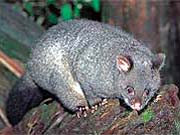Articles and reports from the Life Sciences and chemistry area deal with applied and basic research into modern biology, chemistry and human medicine.
Valuable information can be found on a range of life sciences fields including bacteriology, biochemistry, bionics, bioinformatics, biophysics, biotechnology, genetics, geobotany, human biology, marine biology, microbiology, molecular biology, cellular biology, zoology, bioinorganic chemistry, microchemistry and environmental chemistry.

A paper published today (26.11.02) in the December Issue of Journal of Applied Ecology by Cowgill et al describes the results of small-scale field trials that were used to assess the effect of PI-expressing potatoes on non-target soil organisms. The impact of a currently used PCN management option, the nematicide, aldicarb, on soil organisms was also studied.
The transgenic plants had an adverse effect on the fungal component of the soil microbial community, while the nematicide adversely

In the current crisis of global biodiversity loss, the discovery of new species is a welcome addition. But the recent finding that the mountain brushtail possum, an arboreal marsupial mammal of Australian wet forests, is actually made up of two species also poses new conservation challenges.
The new species is proposed in an article in the latest Australian Journal of Zoology (Volume 50, Issue 4), authored by Earthwatch-supported biologist Dr. David Lindenmayer (Australian National Universit

Phospholipid bilayers that mimic cell membranes in living organisms are of interest as substrates for biosensors and for the controlled release of pharmaceuticals. To better understand how these materials behave with embedded proteins, a necessary first step is to understand how the bilayers respond by themselves.
As will be reported in the Dec. 9 issue of Physical Review Letters (published online Nov. 21), scientists at the University of Illinois at Urbana-Champaign have studied the phase t

A new form of nanotechnology developed at Stanford University may lead to a better understanding of the life and death of human cells.
Writing in the Nov. 18 Proceedings of the National Academy of Sciences (PNAS), Stanford researchers described how newly created circles of synthetic DNA – called “nanocircles” – could help researchers learn more about the aging process in cells.
“In the long run, we have this dream of making laboratory cells live longer,” said Eric Kool, a pr

University of Minnesota researchers, with collaborators at the U. S. Department of Agriculture’s National Animal Disease Center in Ames, Iowa, have completed sequencing the genome of the bacteria that causes Johne’s disease, a major chronic wasting disease found in dairy cattle. The bacterium, Mycobacterium paratuberculosis, is considered one of the most important threats to the health of dairy cattle worldwide and may represent a potential risk to the safety of the milk supply. The gene se

On 14 November ECSITE has launched BIONET (www.bionetonline.org), a European collaborative project to present for public debate controversial ethical, legal and social issues in contemporary Life Sciences.
Based on a multi-lingual website and a programme of linked events, BIONET has been developed by 8 European science centres and museums with funding from the European Commission.
The website introduces 6 current Life Science issues that raise profound ethical, legal and social dile